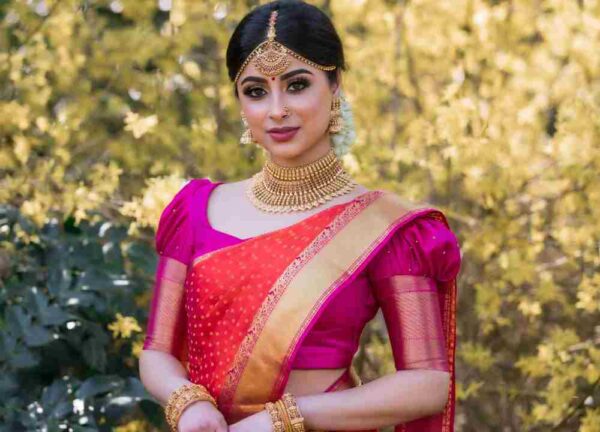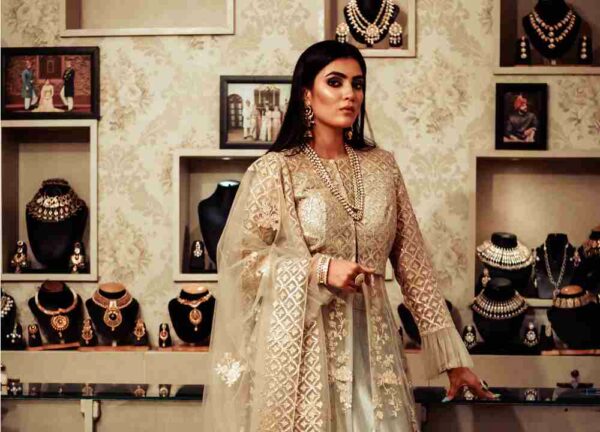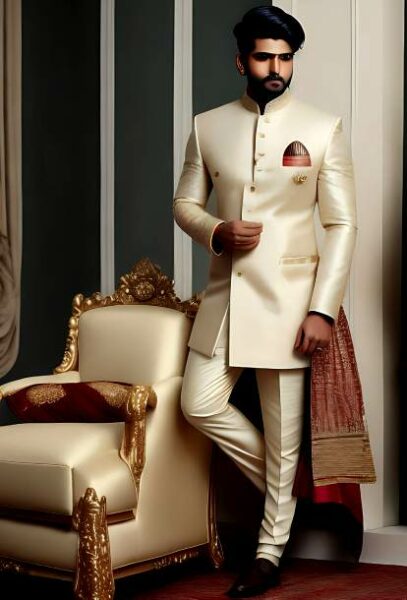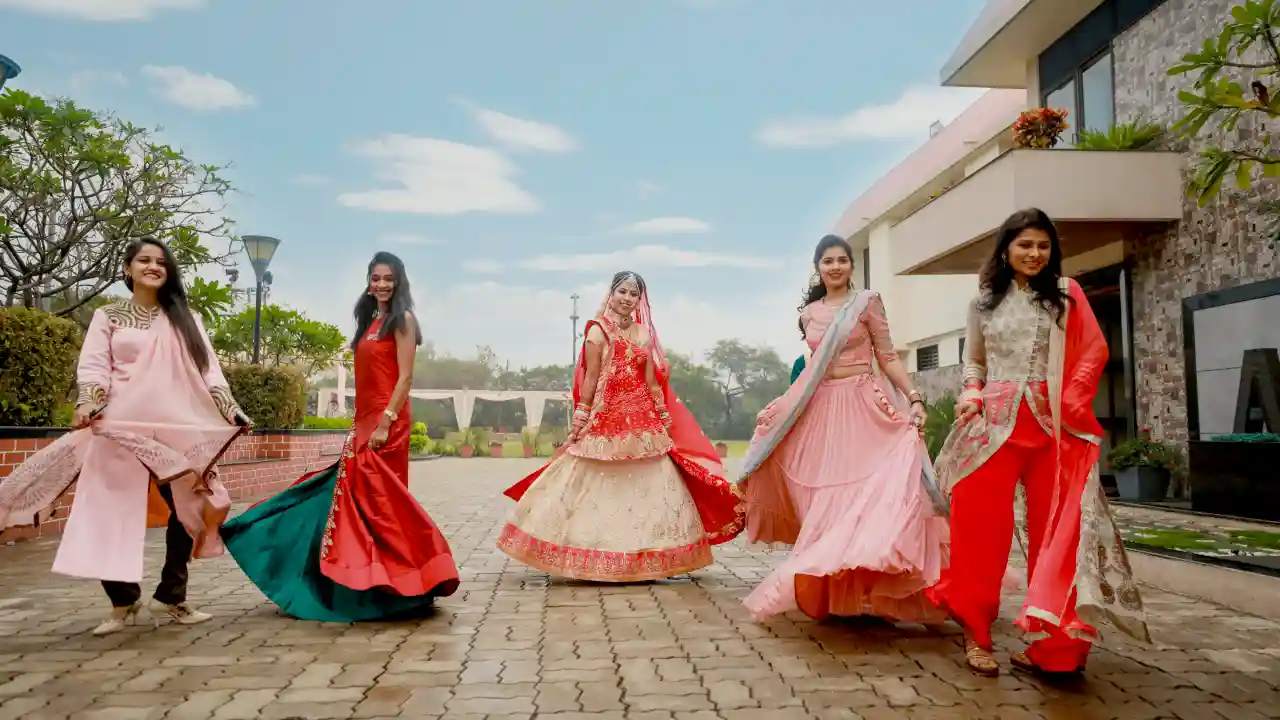Fashion holds immense significance in Indian culture, serving as a vibrant expression of identity, tradition, and creativity. As each year brings new trends and styles, the anticipation and excitement surrounding the latest Indian fashion trends for 2023 are palpable.
Indian fashion is a dynamic tapestry that weaves together diverse influences and sources, creating a unique and captivating sartorial landscape. Bollywood, the Indian film industry, has been a significant influencer in shaping fashion trends, while social media platforms and fashion blogs have also emerged as powerful sources of inspiration. In Indian fashion, muslin cloths are revered for their timeless elegance and breathability, often used to create graceful sarees and comfortable traditional attire.
Designers, fashion enthusiasts, and trendsetters eagerly await the unveiling of new collections and runway showcases that define the upcoming season’s aesthetics. In this dynamic era of Indian fashion, tradition intertwines with innovation, cultural influences blend with global inspirations, and the possibilities are endless. The anticipation is high as the year unfolds with its fresh and captivating fashion narratives. Let’s delve deeper into the most recent Indian fashion trends of 2023.
Traditional Revival:
The Resurgence of Traditional Indian Attire and Craftsmanship:
Indian fashion embraces diverse styles, fusing tradition with modernity. Discover the best hairstyles for beanies this winter, adding flair to cosy fashion statements.
- Traditional Indian attire and craftsmanship are experiencing a revival within the style scene.
- Classic textiles like Banarasi silk, Kanjeevaram, and Chanderi are gaining a colossal reputation.
- Intricate embroidery, zardozi work, and painted-by-hand motifs are being included in modern-day designs.
- This resurgence showcases the wealthy cultural background of India’s conventional garb and craftsmanship.
- Designers and style enthusiasts are embracing these conventional elements to create specific and beautiful clothes.
- The revival of conventional Indian apparel is a celebration of the country’s cultural traditions and inventive techniques.
The popularity of Classic Textiles:
- Banarasi silk, Kanjeevaram, and Chanderi textiles are highly sought after in the fashion world.
- Banarasi silk is known for its luxurious texture and intricate brocade work, making it a favourite for weddings and special occasions.
- Kanjeevaram silk, originating from Tamil Nadu, is admired for its vibrant colours, heavy borders, and intricate designs.
- Chanderi fabric, hailing from Madhya Pradesh, is cherished for its lightweight yet rich texture and delicate motifs.
- These classic textiles add an aura of elegance and grace to Indian outfits, making them timeless and versatile.
Incorporation of Intricate Embroidery and Motifs:
- Contemporary designs often showcase the beauty of intricate embroidery, such as zardozi work.
- Zardozi is a traditional form of metal embroidery that involves using gold and silver threads to create stunning motifs.
- Hand-painted motifs are also gaining popularity, adding a touch of artistic flair to modern Indian fashion.
- These embellishments and motifs are incorporated into various garments like sarees, lehengas, and salwar suits.
- The combination of classic textiles and intricate embroidery or motifs results in visually stunning and culturally significant outfits.
- Such designs reflect the craftsmanship and attention to detail that have been passed down through generations in India.
Overall, the resurgence of traditional Indian attire and craftsmanship highlights the timeless beauty and cultural significance of classic textiles like Banarasi silk, Kanjeevaram, and Chanderi. The incorporation of intricate embroidery, zardozi work, and hand-painted motifs adds a touch of artistic expression to contemporary designs, creating unique and visually captivating outfits. This revival showcases India’s rich heritage and allows individuals to embrace their cultural roots while staying fashion-forward.

Fusion Fashion:
Fusion of Traditional Indian Elements with Modern Aesthetics:
- The fashion scene in India has seen a wonderful blend of traditional Indian elements and modern aesthetics.
- Indo-Western outfits are a popular trend, effortlessly combining the grace of traditional Indian attire with the trendy appeal of Western fashion.
- These outfits create a perfect harmony between the timeless charm of Indian culture and contemporary style preferences.
- Indo-Western ensembles like saree gowns and dhoti pants paired with crop tops have gained immense popularity.
- These outfits showcase a fusion of Indian and Western prints, patterns, and silhouettes, offering a unique and modern twist to traditional Indian garments.
- The fusion of traditional and modern elements brings versatility to fashion choices, allowing individuals to experiment with their personal style.
- Indo-Western fashion provides a platform to express individuality while paying homage to the rich cultural heritage of India.
- It is a reflection of the evolving fashion sensibilities, catering to the desires of those who seek a blend of tradition and contemporary flair.
- This fusion trend has captivated the fashion industry, with designers incorporating traditional Indian textiles and techniques into modern designs.
- The fusion of traditional Indian elements with modern aesthetics offers a wide range of choices for various occasions, be it weddings, parties, or casual outings.
Growing Trend of Indo-Western Outfits:
- Saree gown: A blend of saree and gown styles, creating a stylish and convenient outfit.
- Features traditional draping techniques and Western silhouettes.
- Offers a unique and fashionable look.
- Dhoti pants with crop tops: A growing trend combining comfortable dhoti pants with chic crop tops.
- Provides versatility and appeal.
- Emphasizes the fusion of traditional and modern elements.
A blend of Indian and Western Prints, Patterns, and Silhouettes:
The latest Indian fashion trends seamlessly blend traditional Indian aesthetics with elements of Western fashion, creating a captivating fusion of styles.
- Indian fashion designers are fusing traditional motifs and methods with modern ones to produce a distinctive fusion of styles.
- Indian aesthetics are being combined with Western elements like stripes, polka dots, and florals to produce visually stunning clothing.
- Innovative silhouettes are being experimented with by designers to create outfits that combine the comfort and functionality of Western clothing with the elegance of Indian garb.
- Sarees, lehengas, and Anarkali, traditional Indian clothing, are being updated with contemporary cuts, drapes, and embellishments.
- Indo-Western fusion attire like saree gowns, cape-style kurtas, and dhoti pants worn with crop tops is becoming more and more popular.
- The fusion trend is also being embraced by accessories, with Western-inspired statement pieces being combined with traditional Indian jewellery.
- This fusion of Indian and Western prints, patterns, and silhouettes is becoming increasingly popular among celebrities and fashion industry influencers.
Sustainable Indian Fashion:
- As a responsible and ethical method of clothing production, sustainable Indian fashion is gaining a lot of attention and recognition.
- In order to preserve traditional crafts and support artisans’ sustainable livelihoods, traditional handloom techniques are being revived and celebrated.
- In India, recycling and upcycling are essential components of sustainable fashion.
- Designers are reusing old textiles and clothing to make brand-new, cutting-edge pieces, which reduces waste and encourages circularity.
- Slow fashion, which emphasises quality over quantity, is becoming more and more popular.
- Instead of following the latest fast-fashion trends, buyers are urged to invest in classic, long-lasting items that will last.
Colour Significance in Indian Fashion
Indian fashion is renowned for its colourful palette, which plays a significant role in the nation’s culture and traditions. Every colour used in Indian fashion has a symbolic meaning and stands for different facets of daily life, rituals, and feelings.
- In Indian culture, the colour red is regarded as auspicious and is frequently worn at weddings and other festive events. It stands for passion, love, and success.
- Yellow is a colour that represents celebration, joy, and happiness. It is frequently worn during religious rituals and celebrations like Diwali and Holi.
- The colour green stands for harmony, growth, and fertility. In Hinduism, it is regarded as a sacred colour and is frequently worn during religious rituals because it is connected to nature.
- The colour blue represents calmness, spirituality, and divinity. It is a popular colour for traditional clothing and is connected to Lord Krishna.
- The colour orange is associated with spirituality and purity. It is frequently worn by monks during religious ceremonies and represents fire.
- White is the colour of spirituality, peace, and purity. It is frequently worn during religious celebrations and, in some Indian communities, is the colour of mourning.
- Pink has a feminine, romantic, and tender connotation. It is a preferred colour for conventional women’s clothing and is frequently used in bridal attire.
- The colours gold and silver are regarded as auspicious and are connected to wealth, prosperity, and regal status. They are frequently used in Indian wedding attire and festive attire.
- The significance of colours in Indian fashion is a reflection of the cultural values, customs, and symbolism ingrained in the nation’s history.
- 16-Season Colour Analysis allows fashion enthusiasts to explore a wide range of colours that complement their skin tone, undertones, and colouring, empowering them to showcase their true selves through the language of fashion.
Accessorize to Mesmerize:
Here is a list of accessories commonly used in Indian fashion:
- Jewellery:
- Necklaces: Mangalsutra, Kundan necklace, Temple necklace, Choker necklace.
- Earrings: Jhumkas, Chandbalis, Studs, Hoops.
- Bangles and Bracelets: Glass bangles, Kundan bangles, Silver bracelets, Kadas.
- Rings: Statement rings, Toe rings.
- Anklets: Silver anklets, Ghungroo anklets.
- Maang Tikka: Forehead jewellery piece.
- Nose Ring: Nath or nose stud.
- Handbags and Clutches:
- Potli bags: Drawstring bags made of fabric or embellished with embroidery or beads.
- Embroidered clutches: Small purses with intricate embroidery work.
- Jhola bags: Traditional fabric bags with colourful prints or embroidery.
- Beaded or embellished handbags: Handbags adorned with beads, sequins, or stones.
- Potlis: Small drawstring pouches made of fabric or silk.
- Footwear:
- Juttis and Mojris: Traditional embroidered leather or fabric shoes.
- Kolhapuris: Open-toe leather or fabric sandals with intricate designs.
- Sandals: Embellished or beaded sandals with Indian motifs.
- Wedges: Ethnic-style wedges with intricate detailing.
- Heels: Embroidered or embellished high-heeled shoes.
- Toe rings: Rings worn on the toes, often made of silver.
- Scarves and Dupattas:
- Silk scarves: Vibrant and colourful scarves with traditional Indian prints.
- Embroidered dupattas: Long, embroidered stoles or shawls worn with Indian outfits.
- Pashmina shawls: Soft and warm shawls made from fine cashmere wool.
- Bandhani dupattas: Tie-dye dupattas with unique patterns and colours.
- Chiffon or georgette dupattas: Lightweight and sheer dupattas with delicate embroidery.
- Hair Accessories:
- Hair jewellery: Decorative hairpins, clips, and brooches adorned with stones or pearls.
- Maang Tikka: Forehead jewellery piece worn with traditional outfits.
- Hair bands: Embellished or beaded hair bands with Indian designs.
- Gajra: Fresh or artificial flower garlands worn in the hair.
- Matha Patti: Intricate headpiece worn across the forehead.
These accessories are essential in complementing and enhancing Indian traditional and festive attire, adding a touch of elegance and cultural charm to the overall look.

Menswear Evolution:
In recent years, Indian menswear fashion has witnessed a remarkable evolution, embracing a fusion of traditional elements with contemporary styles. One notable trend that has gained popularity is the fusion of bandh gala suits with modern cuts. These bandhgala suits, known for their high collars and buttoned-up look, have been reinvented with slimmer silhouettes, shorter lengths, and unconventional fabrics.
This blend of traditional and modern aesthetics has brought a fresh and dynamic appeal to men’s fashion. Moreover, vibrant colours have taken centre stage, replacing the conventional muted tones. From rich jewel tones to playful pastels, men are experimenting with a wide spectrum of hues to make a bold statement. Alongside the colour revolution, unique prints and patterns have made their mark, ranging from abstract geometrics to nature-inspired motifs, adding a touch of individuality to men’s ensembles.
To complete the contemporary look, unconventional accessories like pocket squares, lapel pins, and statement shoes are being embraced, allowing men to showcase their personal style and create a lasting impression. This evolution in Indian menswear fashion signifies a departure from the conventional and a celebration of creativity, self-expression, and a vibrant sartorial journey.

Conclusion:
Designers are mixing Indian and Western prints, patterns, and styles to create stunning outfits. Indian prints such as paisleys, block prints, and ikat are now seen on Western dresses, tops, and skirts, adding a cultural flair. At the same time, Western prints like stripes, polka dots, and animal prints are being used in traditional Indian garments, giving them a modern touch. This fusion is the most sought-after style and design in the realm of the latest Indian fashion trends.
Designers experiment with blending Indian and Western prints, patterns, and silhouettes. They combine the best of both worlds, creating visually striking outfits that catch the eye. Indian prints like paisleys, block prints, and ikat are now found on Western-style dresses, tops, and skirts. These prints add a touch of cultural richness and uniqueness to the outfits, making them stand out.
Conversely, Western prints like stripes, polka dots, and animal prints are being incorporated into traditional Indian garments. This infusion of Western patterns injects a contemporary vibe into the formal attire, making it more fashionable and appealing to a broader audience.
